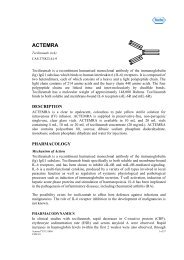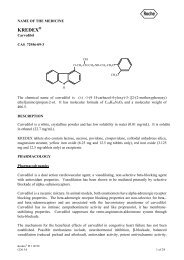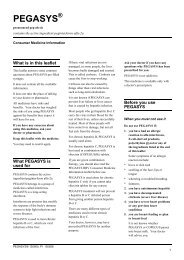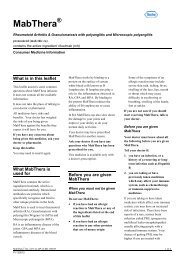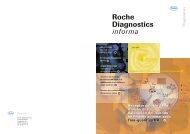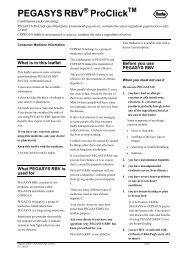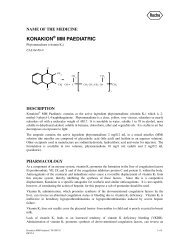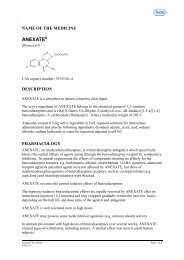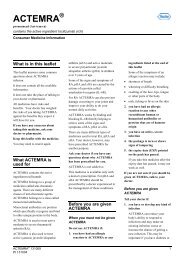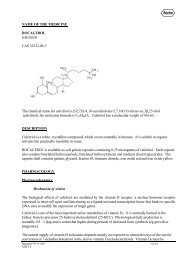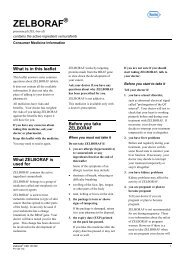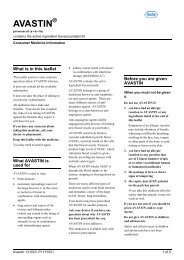Product Information PI - Roche Australia
Product Information PI - Roche Australia
Product Information PI - Roche Australia
Create successful ePaper yourself
Turn your PDF publications into a flip-book with our unique Google optimized e-Paper software.
PHARMACOLOGY<br />
Pharmacodynamics<br />
Mechanism of Action<br />
Oseltamivir phosphate is a pro-drug of the active metabolite, oseltamivir carboxylate. The<br />
active metabolite is a selective inhibitor of influenza virus neuraminidase enzymes, which are<br />
glycoproteins found on the virion surface. Viral neuraminidase is essential for the release of<br />
recently formed virus particles from infected cells and the further spread of infectious virus in<br />
the body. A study in cultured tracheobronchial epithelial cells and primary nasal epithelial<br />
cells has shown that oseltamivir may also suppress virus entry to cells.<br />
In Vitro Susceptibility Tests<br />
Antiviral susceptibility and development of resistance to oseltamivir is usually discussed in<br />
the context of cell culture experiments involving Madin-Darby Canine Kidney (MDCK) virus<br />
reduction assay and/or neuraminidase inhibition assay (NA IC 50 ). The concentrations of<br />
oseltamivir carboxylate required for inhibition of influenza virus were highly variable<br />
depending on the assay method used and the virus tested. Oseltamivir carboxylate showed<br />
antiviral activity in the low nano-molar range in all these cell assays.<br />
In vitro neuraminidase enzyme IC 50 (NA IC 50 ) values for oseltamivir-susceptible clinical<br />
isolates of influenza A ranged from 0.1 – 1.3 nM and for influenza B from 2.6 – 8.7 nM.<br />
Reduced susceptibility to oseltamivir carboxylate has been recovered in vitro by passage of<br />
virus in the presence of increasing concentrations of oseltamivir carboxylate. In vitro NA<br />
IC 50 assays showed that the degree of reduced sensitivity (IC 50 ) differs markedly for different<br />
mutations from 2-fold for resistant variant with the I222V mutation in influenza A N1 to<br />
30 000-fold for resistant variant with the R292K mutation in influenza A N2.<br />
The relationship between the in vitro antiviral activity in cell culture and the inhibition of<br />
influenza virus replication in humans has not been established.<br />
Viral Resistance<br />
Reduced sensitivity of viral neuraminidase<br />
Clinical studies: The risk of emergence of influenza viruses with reduced susceptibility or<br />
resistance to oseltamivir has been examined in clinical studies (see Table 1). All patients who<br />
were found to carry oseltamivir-resistant virus did so transiently, cleared the virus normally<br />
and showed no worsening of the underlying symptoms.<br />
Table 1:<br />
Emergence of Influenza Viruses with Reduced Susceptibility or Resistance to<br />
Oseltamivir in Clinical Studies<br />
Patients with Resistance Mutations (%)<br />
Patient Population<br />
Phenotyping*<br />
Genotyping and Phenotyping*<br />
Tamiflu <strong>PI</strong> 6 mg/mL oral suspension and capsules 120119 2 of 28<br />
CDS 10.0



